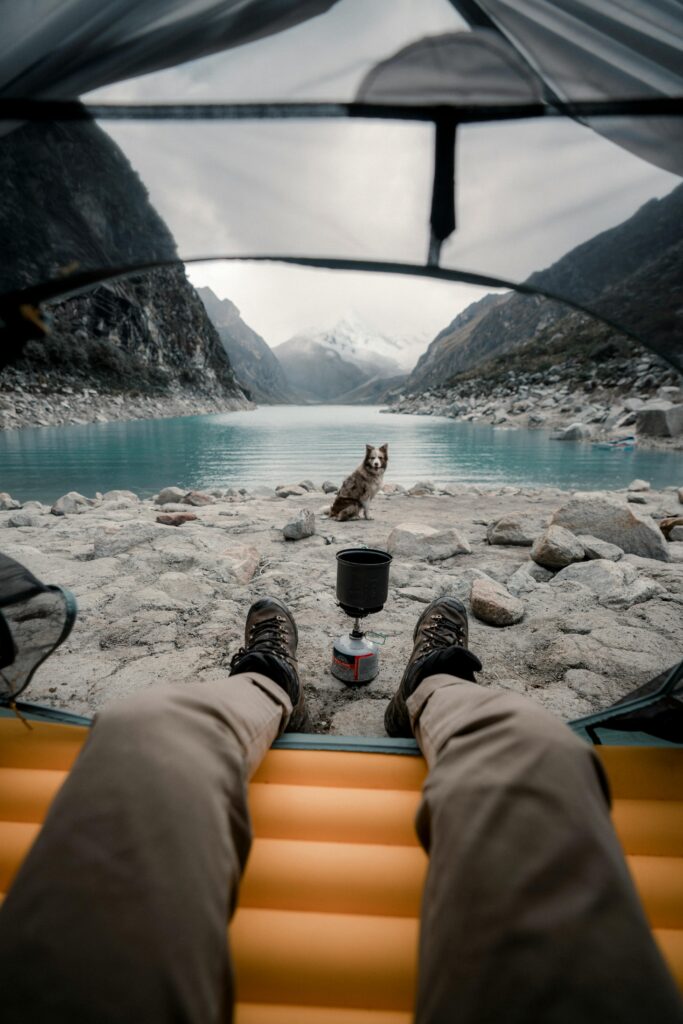Running out of power on an overlanding trip is more than an inconvenience—it can cut your adventure short. Whether you’re relying on power for refrigeration, navigation, lighting, or connectivity, a well-designed off-grid power system ensures you stay powered in even the most remote locations.
This guide covers the essential components of an off-grid solar power setup, explaining what you need, how they work together, and how to optimize your system for extended overlanding and remote camping. From solar panels and charge controllers to battery banks and backup generators, we’ll walk you through building a reliable system tailored to your needs.
Affiliate Disclosure: CampAndOverland participates in the Amazon Services LLC Associates Program, an affiliate advertising program designed to provide a means for sites to earn advertising fees by advertising and linking to Amazon.com.
Understanding the Off-Grid Power System
- Solar Panels capture sunlight and generate electricity.
- A Charge Controller regulates the power flow to prevent overcharging.
- Energy is stored in a Battery Bank or Solar Generator for later use.
- An Inverter converts DC power to AC if needed.
- Devices & Appliances draw power from the system to keep everything running off-grid.

Solar Panels: Capturing Energy from the Sun
Solar panels are the foundation of any off-grid power system. They convert sunlight into electricity, which is then stored and used to power your devices.
Choosing the Right Solar Panels
-
Rigid Roof-Mounted Panels – Best for full-time setups. Always charging with no setup required but adds weight and is permanently installed.
-
Portable Folding Panels – Ideal for those who want flexibility. Easy to reposition but requires manual setup.
-
Solar Briefcase Panels – Efficient and foldable, offering compact storage but bulkier when packed.
-
Flexible Solar Panels – Lightweight and ideal for curved surfaces but less durable over time.
For most overlanders, a combination of fixed and portable panels works best. A roof-mounted 200W+ system continuously charges your batteries, while a 100W portable panel provides flexibility when parked in the shade.
🔹 Recommended Solar Panels:
-
Renogy 200W Monocrystalline Solar Panel – Ideal for roof-mounted setups. View On Amazon
-
Jackery SolarSaga 100W Portable Panel – Great for versatile energy collection. View On Amazon
-
EcoFlow 220W Bifacial Solar Panel – Maximizes efficiency with dual-sided solar absorption. View On Amazon
Solar Generators: All-in-One Power Solutions
A solar generator (also called a portable power station) is a self-contained system that includes a battery, inverter, and charge controller. These plug-and-play solutions are perfect for campers who need reliable power without complex wiring.
Why Use a Solar Generator?
-
No Installation Required – Simply plug in solar panels and start charging.
-
Portable & Compact – Easily transportable for different camp setups.
-
Built-In Battery & Inverter – Provides AC and DC power output.
🔹 Recommended Solar Generators:
-
Jackery Explorer 2000 Pro – High-capacity, excellent for longer trips. View On Amazon
-
EcoFlow Delta Pro – Versatile, expandable, and fast-charging. View On Amazon
-
Goal Zero Yeti 1500X – Reliable mid-sized power station for most overlanders. View On Amazon
Battery Banks: Storing Power for Nighttime & Cloudy Days
A battery bank stores excess solar energy so you have power when the sun isn’t shining. Your battery capacity determines how long you can stay off-grid without generating new power.
Choosing the Right Battery Type
-
AGM (Absorbed Glass Mat) – Budget-friendly and maintenance-free but heavier and shorter lifespan.
-
Lithium (LiFePO4) – Lighter, more efficient, and lasts 10+ years, but has a higher upfront cost.
-
Lead-Acid (Flooded) – Cheapest option but requires maintenance and has a shorter lifespan.
For serious overlanding, lithium batteries (LiFePO4) are the best choice due to their long lifespan, high efficiency, and lower weight.
🔹 Recommended Batteries:
-
Battle Born 100Ah LiFePO4 – High-quality lithium battery for long-term use. View On Amazon
-
Renogy 100Ah AGM Deep Cycle Battery – A solid budget-friendly alternative. View On Amazon
Charge Controllers: Protecting Your Battery Bank
A solar charge controller regulates the voltage from your solar panels before it reaches your battery bank. This prevents overcharging and ensures optimal efficiency.
Types of Charge Controllers
-
PWM (Pulse Width Modulation) – Best for small setups. Affordable and simple but less efficient with large panels.
-
MPPT (Maximum Power Point Tracking) – Best for larger systems. More efficient and provides higher energy yields but costs more.
🔹 Recommended Charge Controllers:
-
Victron Energy SmartSolar MPPT – High-efficiency power management. View On Amazon
-
Renogy Rover 40A MPPT – Great for mid-to-large solar setups. View On Amazon
Inverters: Converting Stored Energy into Usable Power
Most overlanding gear runs on DC power (12V), but if you need to run AC-powered appliances (like laptops, coffee makers, or induction cooktops), you’ll need an inverter to convert battery power to standard 110V AC.
Types of Charge Controllers
-
PWM (Pulse Width Modulation) – Best for small setups. Affordable and simple but less efficient with large panels.
-
MPPT (Maximum Power Point Tracking) – Best for larger systems. More efficient and provides higher energy yields but costs more.
🔹 Recommended Inverters:
-
Renogy 2000W Pure Sine Wave Inverter – Ideal for running sensitive electronics and appliances. View On Amazon
Conclusion: Building the Best Off-Grid Power System
A complete off-grid solar power system includes:
-
Solar Panels – To collect energy from the sun.
-
Solar Generator and/or Battery Bank – To store power for later use.
-
Charge Controller – To regulate energy flow from solar panels.
-
Inverter – To convert DC power into usable AC power.
By combining these components strategically, you can stay powered indefinitely while exploring remote locations.



